In this month’s Gosforth Nature Reserve Journal, NHSN naturalist, Christopher Wren, shares experiencing the emergence of a dragonfly from the shell of the nymph
May sees the first dragonflies emerge from the ponds in Gosforth Nature Reserve and take to the wing. Over the next six months or so a succession of species will emerge, fly, hunt, mate and lay eggs. They include chasers, emperors, skimmers, darters and hawkers, each with its own characteristics and flight period but all with a similar life cycle.
Most of a dragonfly’s life is spent underwater as a nymph, undergoing a series of moults as it grows for two years, or sometimes more, before spending a few weeks at most as an adult. The earliest to emerge are Broad-bodied Chasers and Four-spotted Chasers.
The emergence of a dragonfly from the shell of the nymph is an amazing thing to watch, a seeming miracle of packaging and automation. These photos were taken at the Meadow Pond in the reserve.
The dragonfly nymph climbed up a dead reed and settled about 40cm above the water at 09.30.
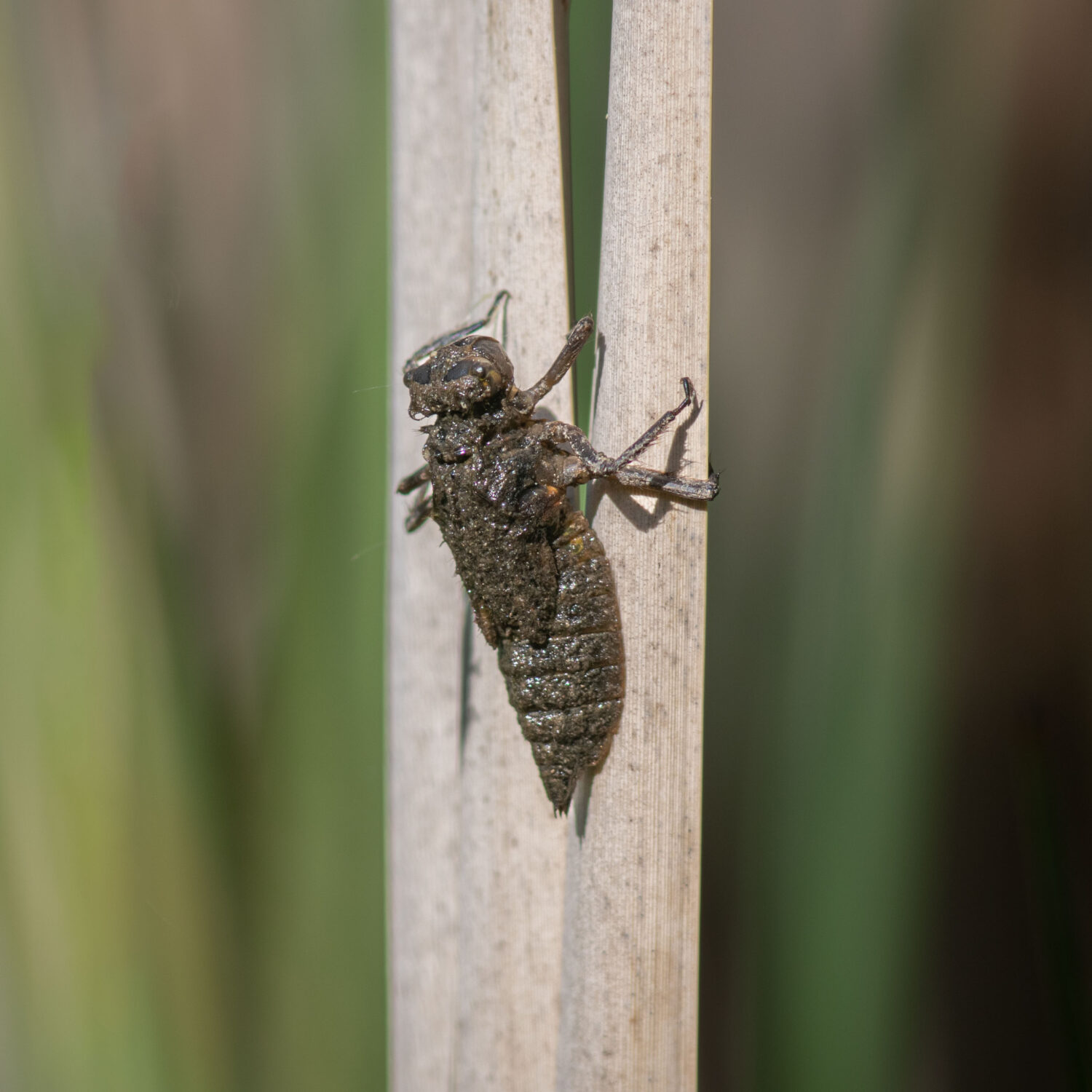
At 09.45 the first split began to appear along the back of the thorax.
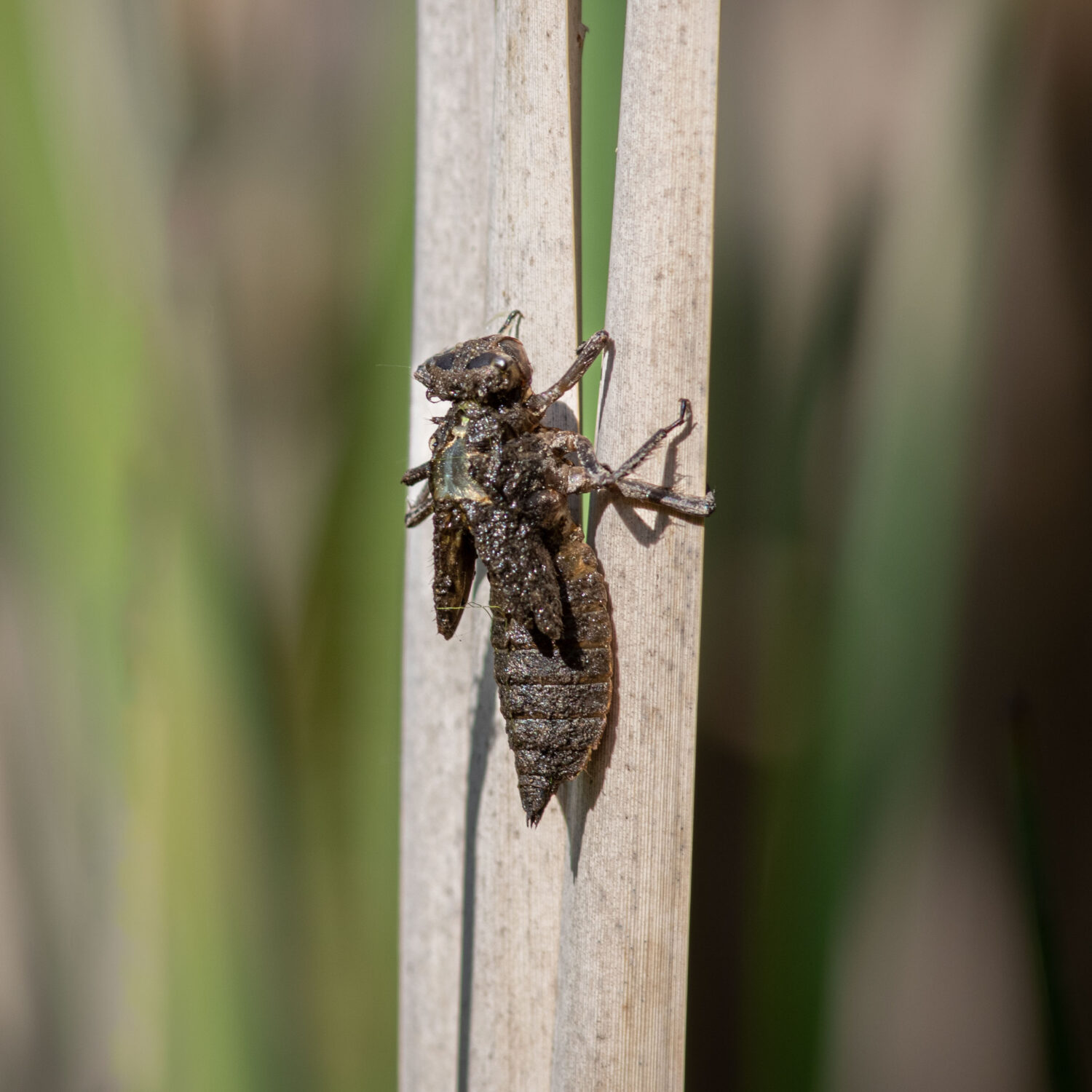
The split then extended to the back of the head and the head appeared.
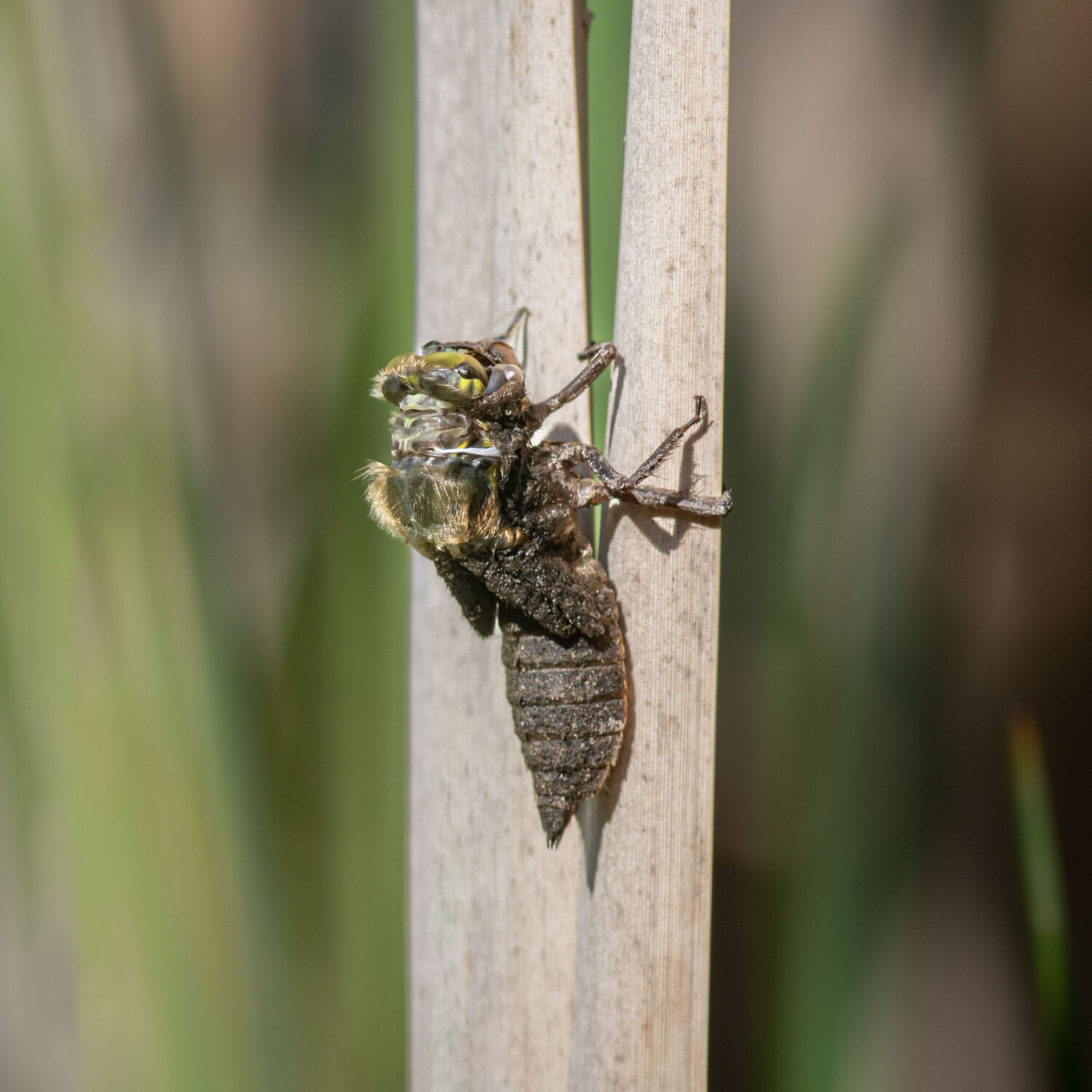
Then the dragonfly gradually hauled itself out until only its abdomen was still in the exoskeleton.
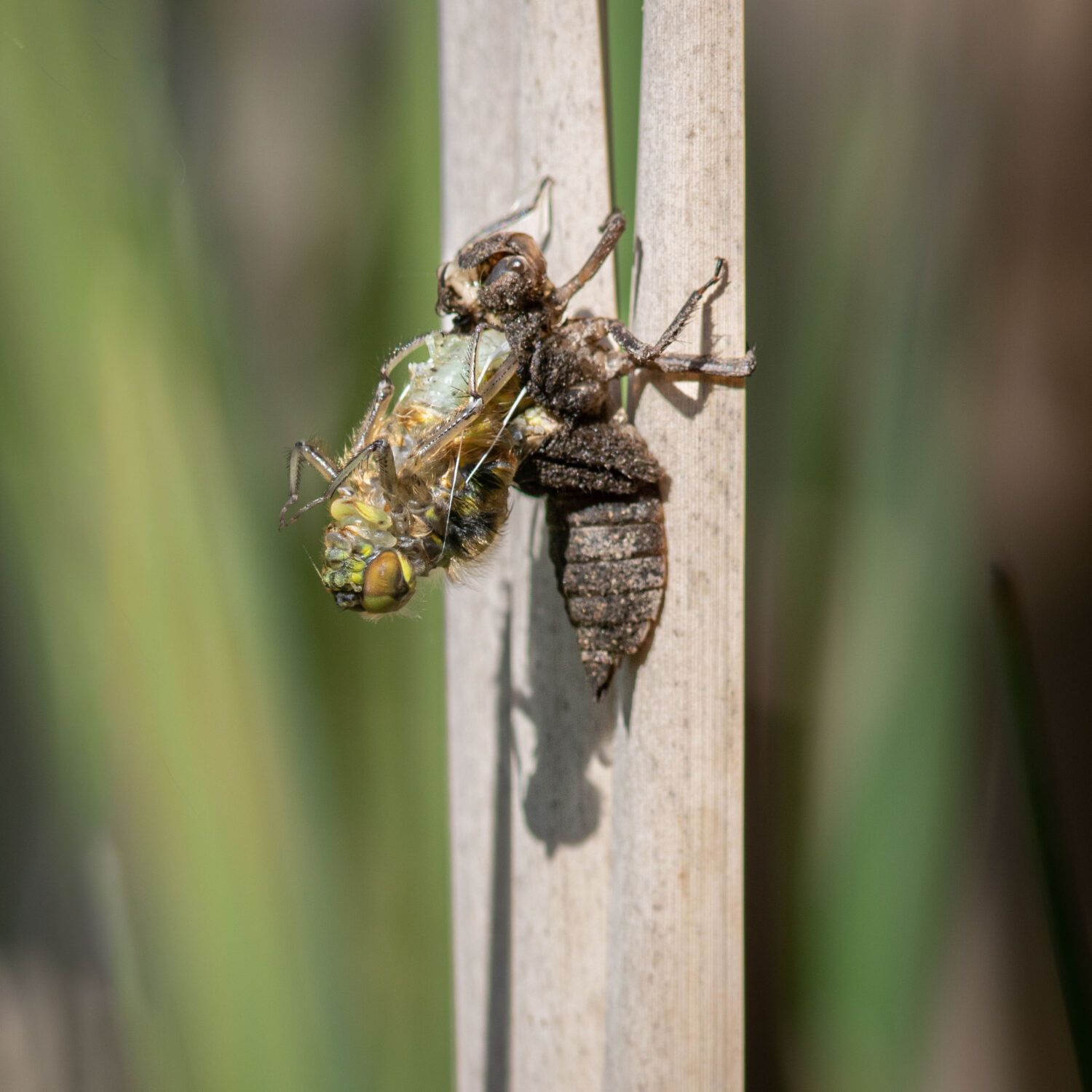
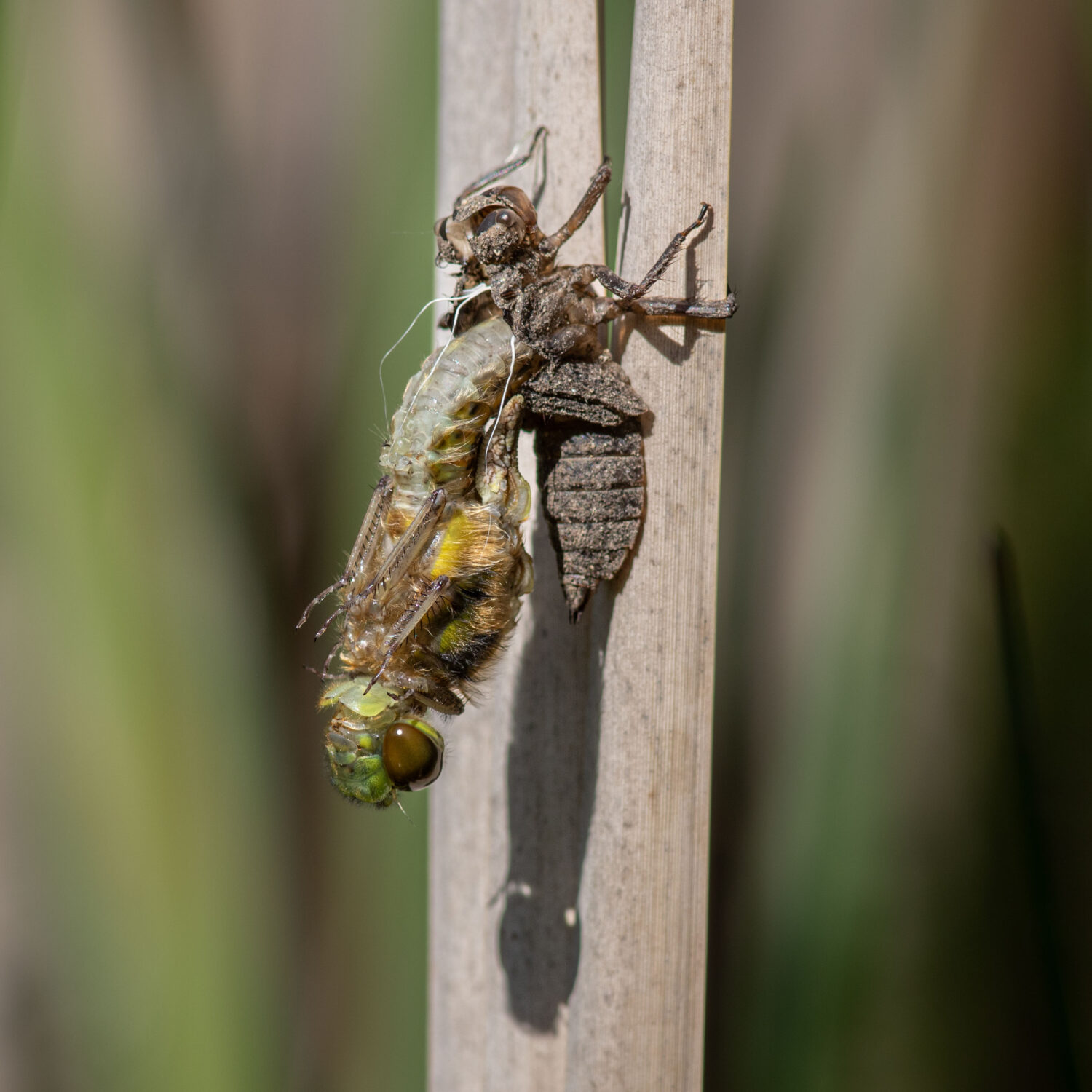
It hung like that for quite a few minutes until at 10.09 it suddenly sprang forward, grasped the exuvia (the empty exoskeleton) and pulled out the rest of its abdomen.
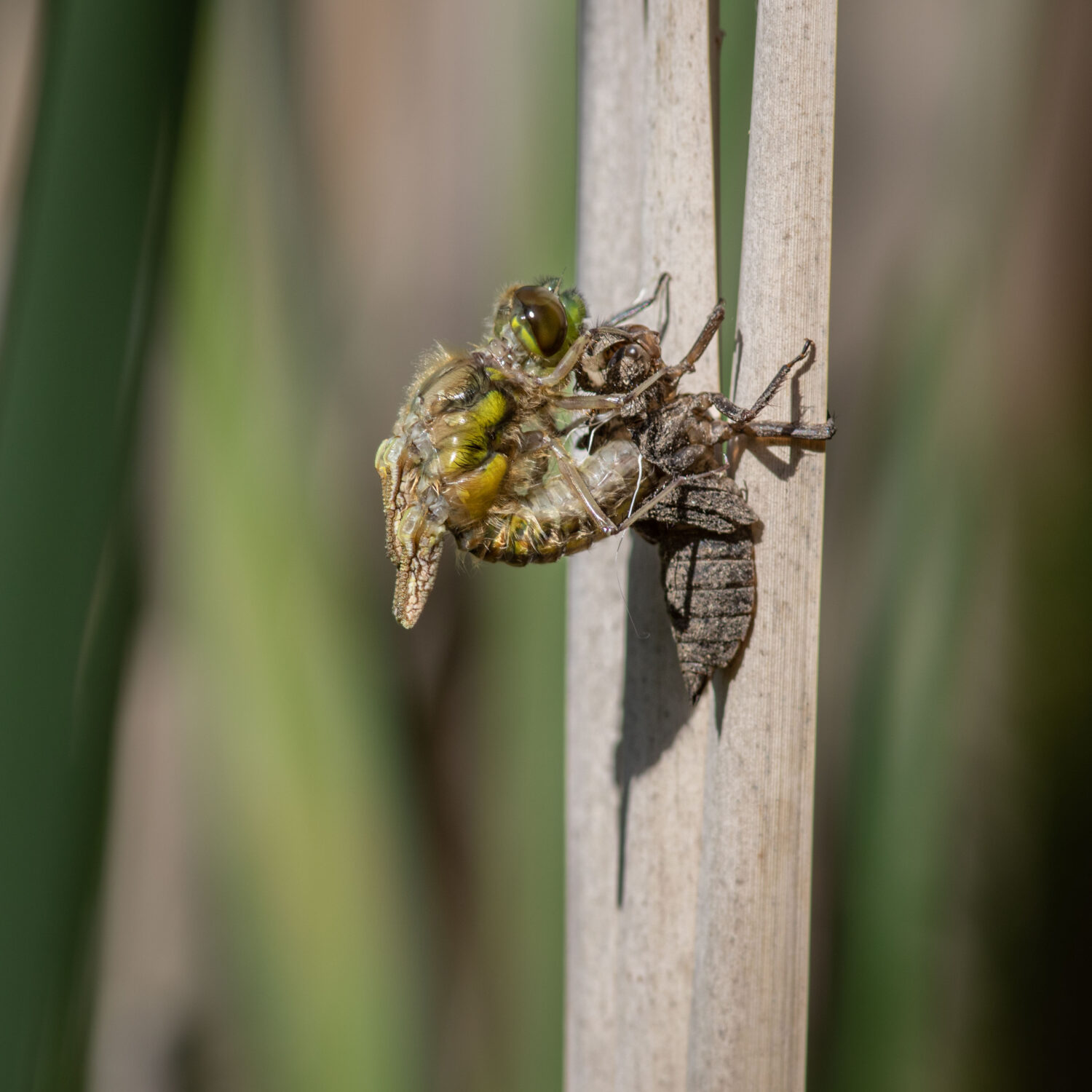
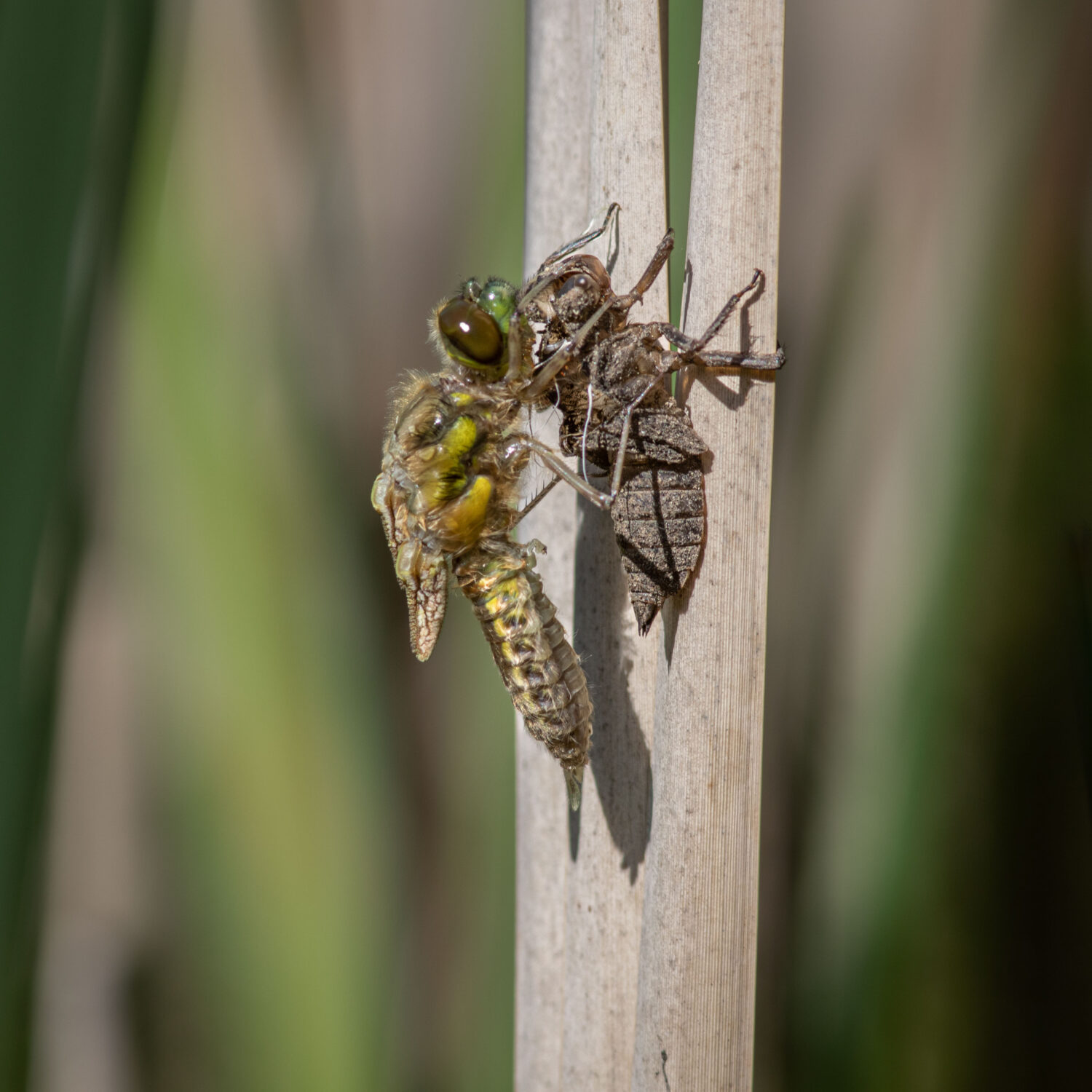
Over the next hour the wings and the abdomen slowly expanded. At the same time the body was darkening and the wing spots began to appear. The colours confirmed that this was a Four-spotted Chaser (Libellula quadrimaculata).
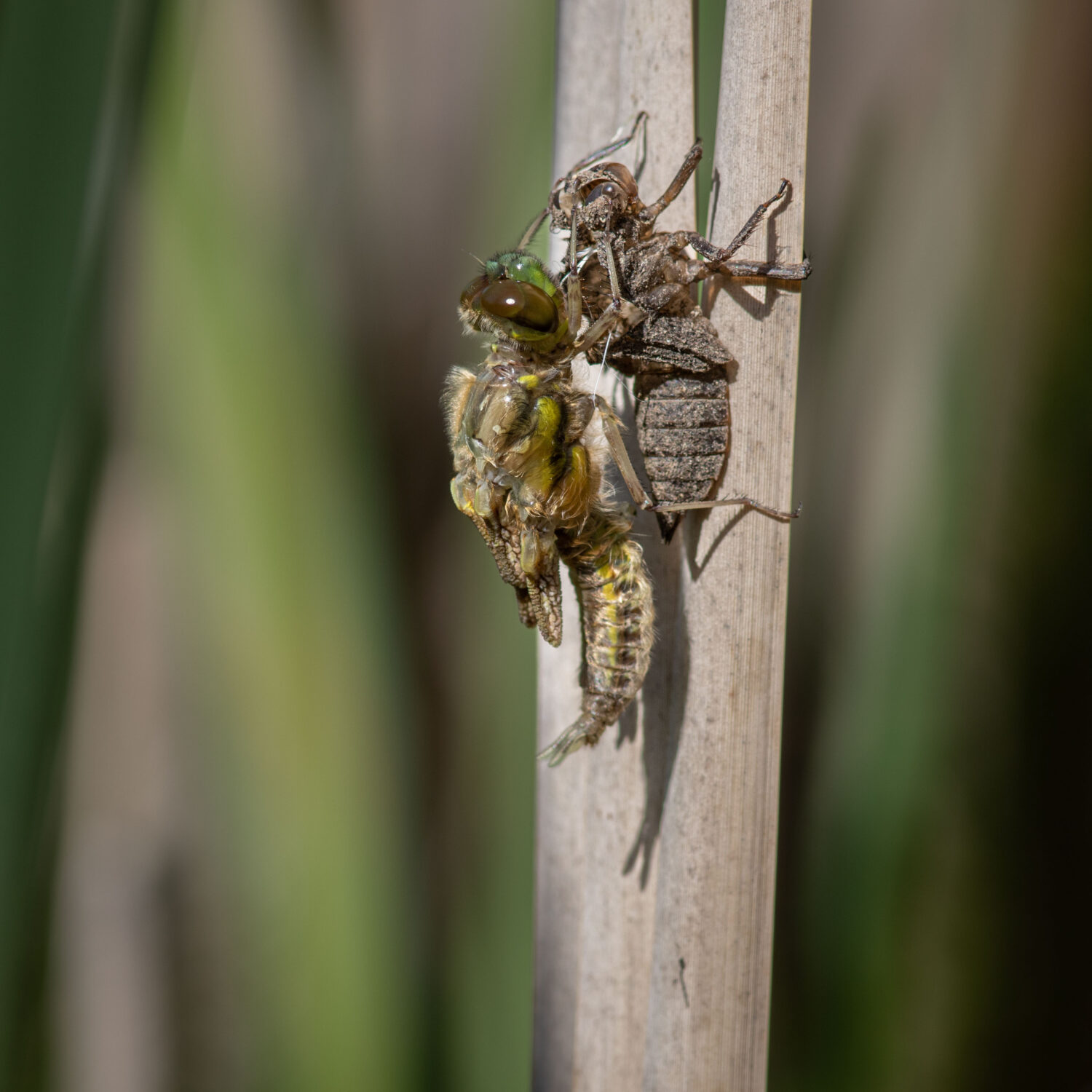
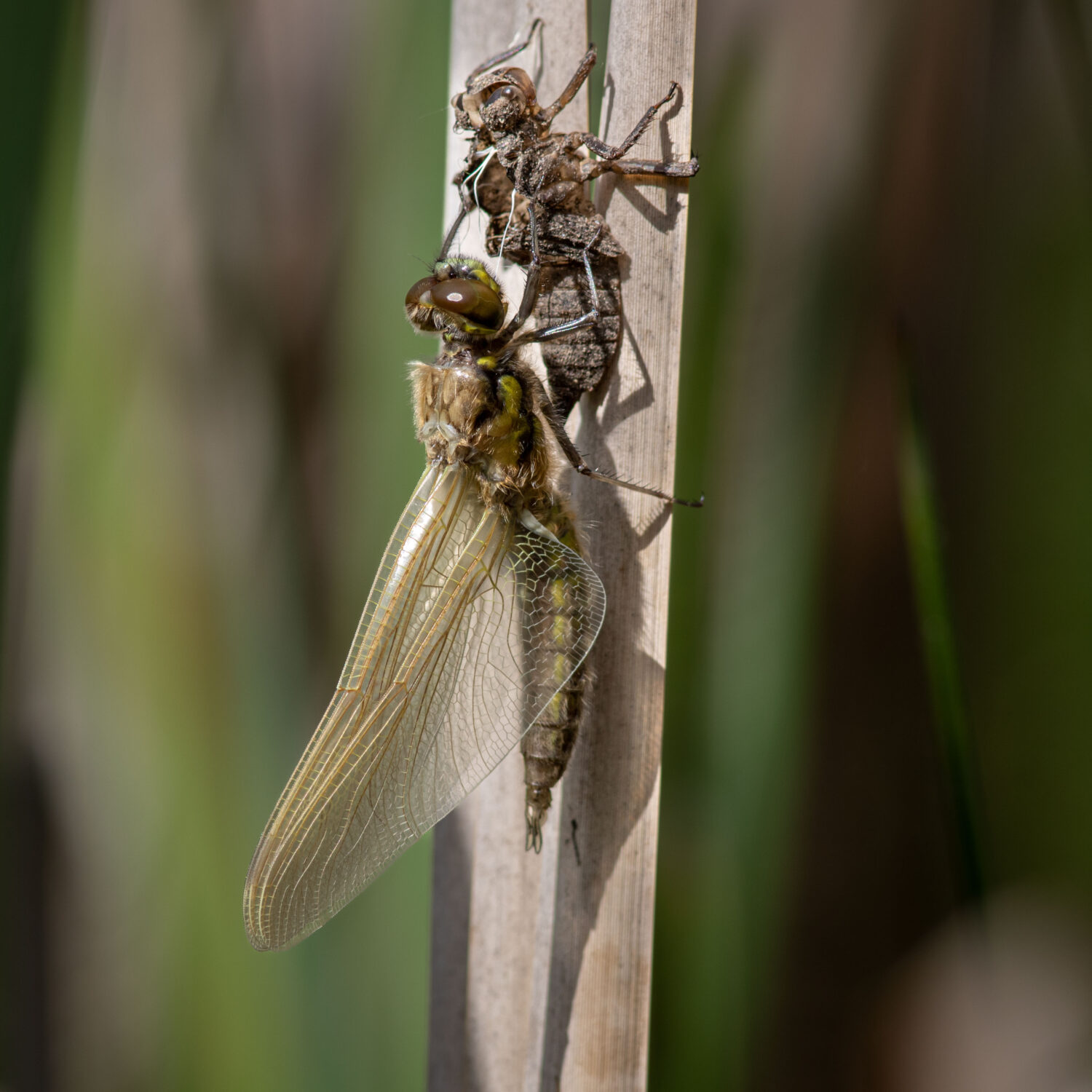
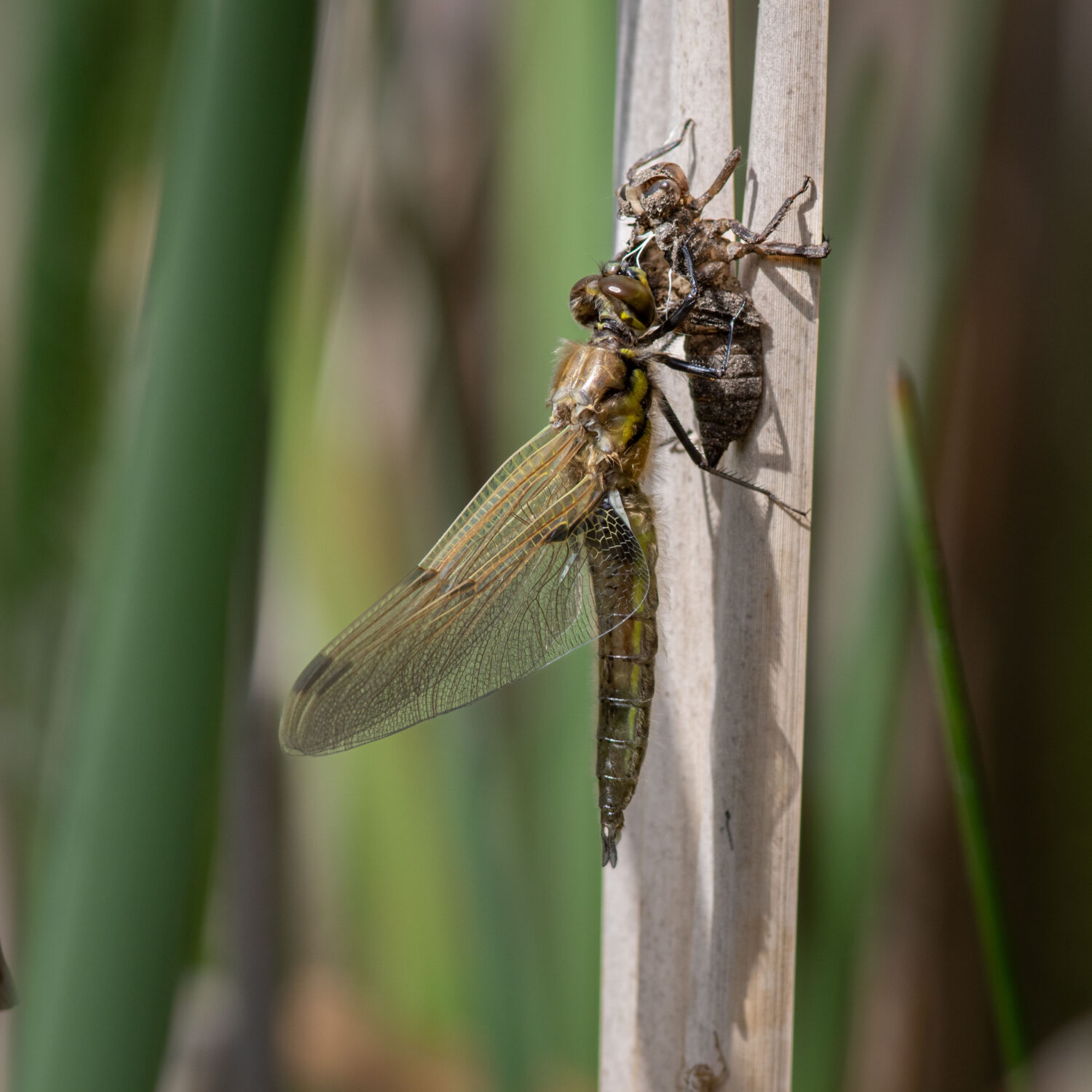
The dragonfly’s position was changing as it was being blown about in the breeze and the wings suddenly opened at 11.13.
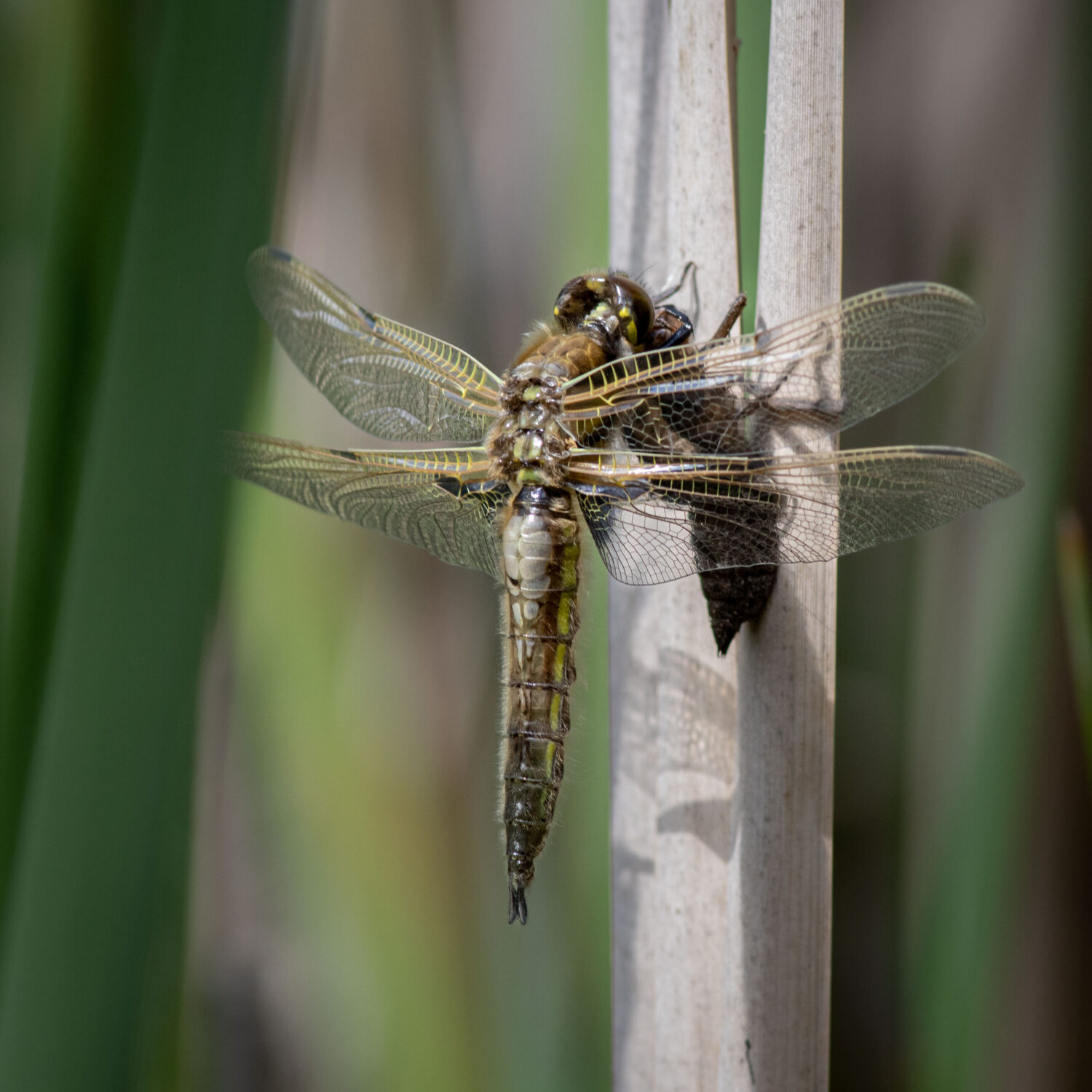
The next stage was to climb up onto the exuvia and a few minutes later to climb higher up the reed.
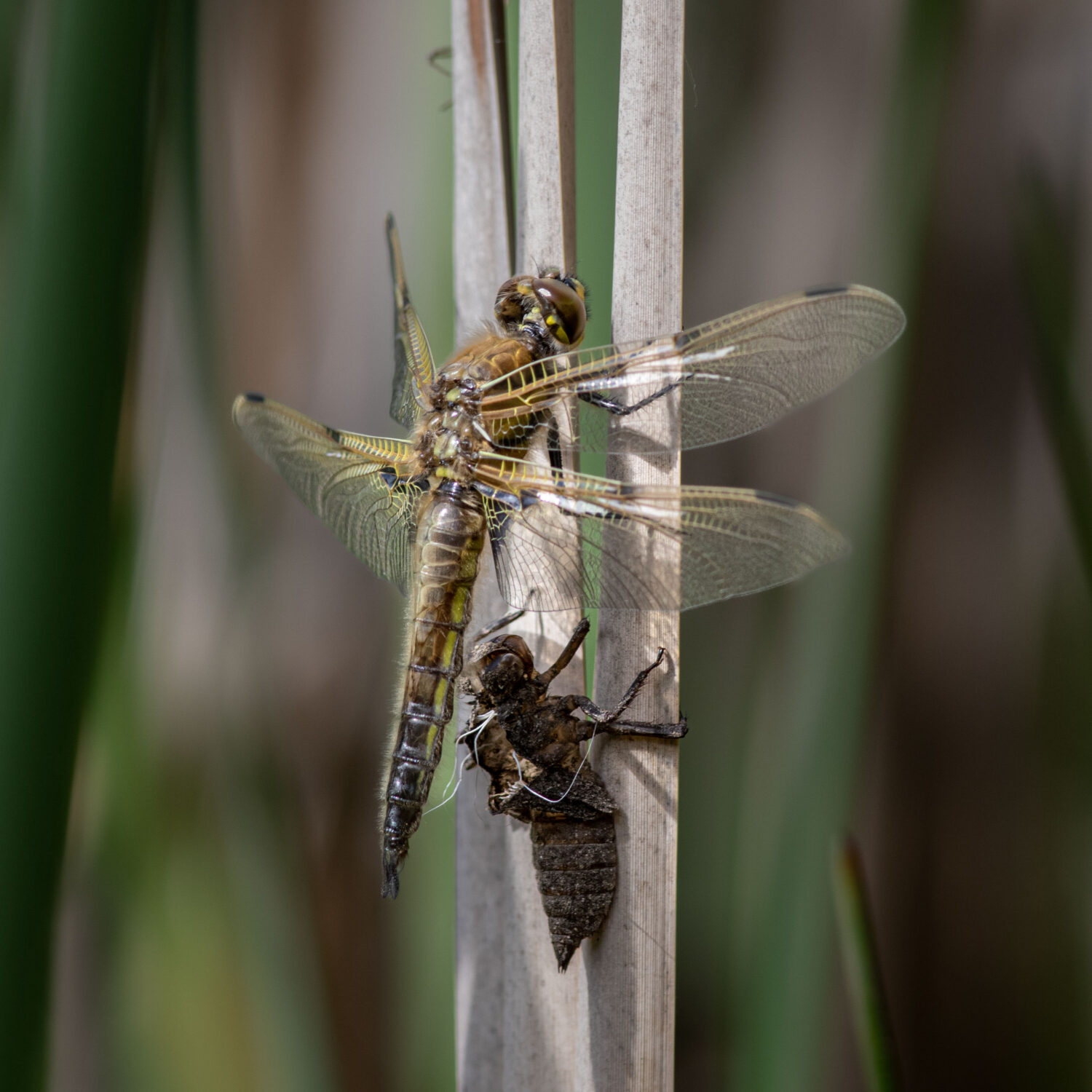
It sat in the sunshine at the top of the reed for several minutes and then suddenly flew off, exactly two hours after the whole process started.
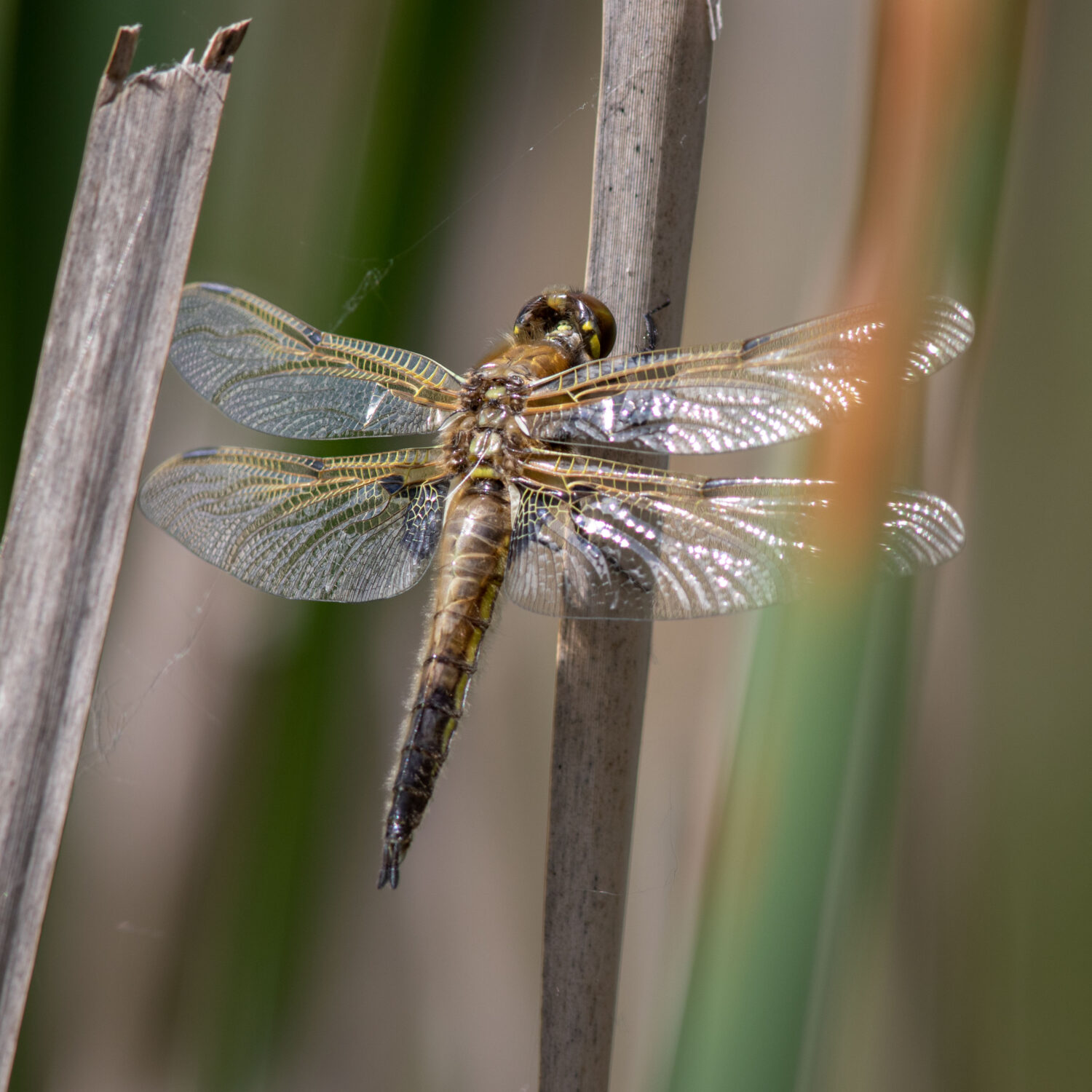
This dragonfly is male and he will stay away from the water while he hunts and builds up his strength for a few days. Then he’ll return and go on patrol in the hope of finding a mate.
Most dragonfly emergence occurs in early morning, although some species emerge during the night to minimise the risk of predation. To watch an ugly water-breathing nymph turn into a beautiful, air-breathing, flying dragonfly is a mesmerising experience.